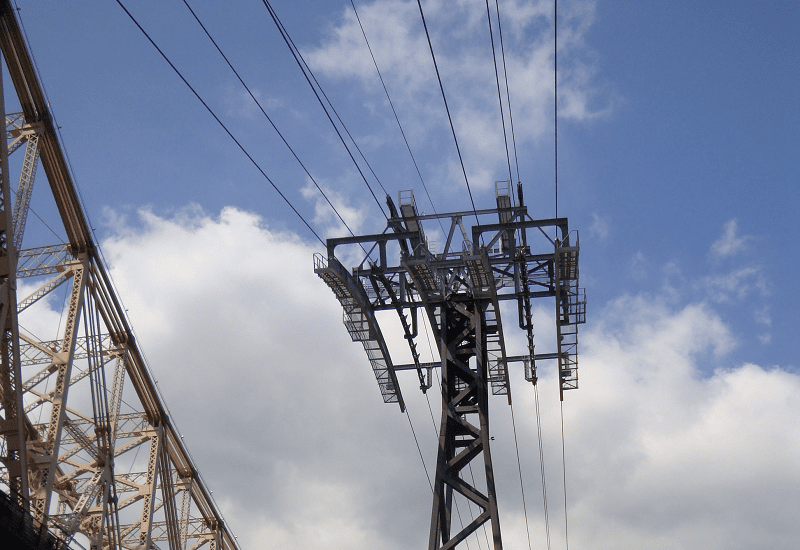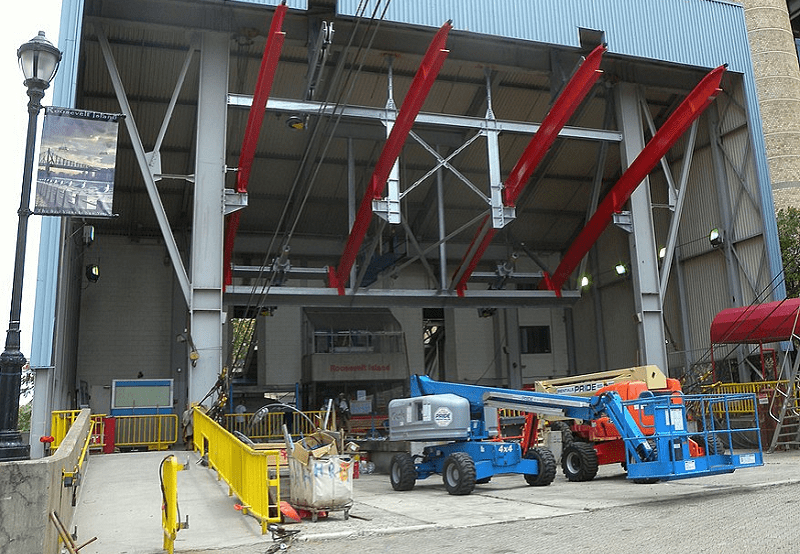The Roosevelt Island Tramway (RIT) is a cable car in New York City that runs across the East River, connecting Roosevelt Island to the Upper East Side of Manhattan. This tram was the first suburban cable car in North America, which was opened in 1976. The tram is in great demand, as its total passenger traffic has reached 26 million passengers in just over 40 years. Next on manhattan-future.
The tram itself consists of two cars that depart from one bank and move forward/backward to the other on two parallel tracks. It is worth noting that the operation of this type of transport is not managed by the New York City Transit Authority, unlike other means of transportation. Although this transport is operated by a separate company, the tram uses the MetroCard MTA card system. With a cable car ticket, a passenger can transfer to the subway system for free.
The Manhattan RIT is operated by Leitner-Poma, a company that works on behalf of the Roosevelt Island Operating Corporation, a public benefit corporation in the state of New York. It was established in 1984 and its main purpose is to provide transportation services on Roosevelt Island in Manhattan.
Why was an RIT built on the island?
Roosevelt Island was originally connected to the mainland of Manhattan by a trolley line that ran across the Queensboro Bridge. This line began operating when it opened in 1909. Trolleybuses to the mainland of NYC stopped in the middle of the bridge, where passengers boarded an elevator that took them to the island.

[Photo source: https://upload.wikimedia.org/]
This trolleybus line and elevator were the only connection between Roosevelt Island and the rest of the city, so this route operated until April 7, 1957. At that time, most other trolleybuses had already stopped operating, as trolleybuses in New York State were replaced by buses. By that time, the construction of the Queensboro Bridge had already been completed, and it solved the city’s traffic jam.
Selection and design of transit service to Roosevelt Island
First, around the mid-1970s, Roosevelt Island was reconstructed to accommodate new housing projects: they were to be affordable for low- and middle-income people. With this in mind, there was a need to build convenient public transportation links to the main part of the city.
At that time, streetcar tracks had already been laid, but by the 1970s they were in disrepair. The Roosevelt Island subway station, which was to serve the island via the 63rd Street subway connection, had not yet been completed. In 1971, the Urban Development Corporation decided to engage Lev Zetlin Associates to select and design a transit service to Roosevelt Island.
The company needed to do a feasibility study for the design of some type of transportation here, so the LZA team was led by James A O’Kon PE. Initially, the possibility of building three alternative modes of transportation was investigated: a ferry, a bridge elevator and a tramway. The company chose a tramway, so they started developing a system for the tender.
Von Roll, which had been selected earlier, was responsible for the supply, installation and equipment of the tramway. At that time, the only elevator to Roosevelt Island was still stopped, and the pedestrian walkway closed in 1974. Everyone hoped that the tram would be opened soon.
[Photo source: https://accidentallywesanderson.com/]
Initially, towers for the tram system were built, and they were completed by July 1975. The complete installation of all equipment was scheduled for December of the same year, 1975. Finally, the construction of the tram line was completed. It was opened in July 1976 as a temporary solution for the transportation needs of the island. However, despite this, the tram became more popular than the subway, whose project was increasingly behind schedule. The RIT was turned into a permanent transportation facility, which remained the only one until 1989.
The decline of the tram due to the opening of the subway
Eventually, in October 1989, the subway was completed, connecting Manhattan with Roosevelt. Although there were two major disruptions before the opening of the station (in 1978, the need to replace worn-out cables, and in 1986, the expiration of the tram’s liability insurance policy), they did not prevent the opening of the subway. After the construction of the 63rd Street subway was completed, the daily passenger flow of the cable car dropped sharply, from the usual 5,500 passengers in 1989 to 3,000 in 1993. The tram was also closed from October 1993 to January 1994 for equipment refurbishment.

[Photo source: https://loving-newyork.com/]
The RIT remained the only mode of transportation that defended the use of the token payment system in Manhattan and NYC. Initially, a special token was used here, which was purchased at the cable car ticket office, and later it was replaced by a standard type for subways and buses.
Already in 2003, MetroCard was able to convince the tramway company to switch to a more modern system. On March 1, 2004, the payment system was fully implemented. The cost of payment in the cable car was set the same as in the subway or buses – USD 2.75 for a one-way trip. It is worth noting that during the 2005 public transportation strike in NYC, the RIT remained in operation, as it was owned by a private company.
Renovation of the tram and its modern operation
On March 1, 2010, the tram line was closed as part of a reconstruction project worth up to $25 million. The French company Poma helped with the modernization, renovation and replacement of all components of the tram system, except for the three main tower bases. After the reconstruction, the tram cables were improved, so that the cars can now move freely and independently of each other. Before that, they had to move simultaneously, which caused difficulties with maintenance and response.

[Photo source: https://upload.wikimedia.org/]
The tram reopened on November 30, 2010. The project to modernize Manhattan’s unique cable car on Roosevelt Island was completed in 9 months, although it was planned to take 7 months.
The RIT is a special transportation service in the city. It contains two cabins that move independently of each other in different directions by cables that are suspended on their own pair. Each tram cabin can accommodate up to 110 passengers. The speed of the cars allows for an average of 115 trips per day.
The speed of the tram is approx. 17 miles per hour (or 27 kilometers per hour), traveling up to 3,140 feet or 960 meters in 3 minutes. The maximum height the cars can reach is 230 feet or 70 meters above the East River. The route runs along the north side of the Queensboro Bridge. The RIT offers a view of the eastern part of Midtown Manhattan.